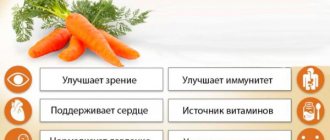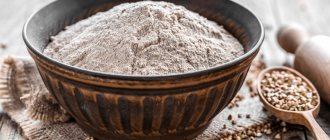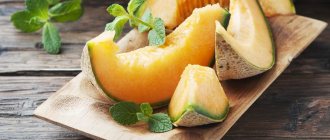Soba noodles are Japanese noodles made from buckwheat flour. The noodles are easily comparable in thickness to spaghetti and can be served hot or cold. Buckwheat noodles have a delicate nutty taste and go well with vegetables, meat and fish. Buckwheat noodles saturate the body with beneficial manganese and are a light dietary product. Let's take a closer look at the benefits and harms of consuming such a new and exotic product.
Calorie content, BJU, GI
Buckwheat noodles have become popular for weight loss because they are an excellent source of healthy fiber, protein and complex carbohydrates. These properties are provided by buckwheat flour in its composition. Soba is one of the healthiest carbohydrate options. Unlike ramen, which often contains oils, fats and salt, buckwheat noodles are very low in fat and cholesterol.
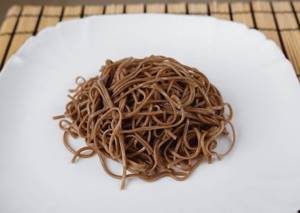
Buckwheat noodles for weight loss
There are about 113 kcal in 100 g of product. Most of them in buckwheat noodles come from slow carbohydrates, about 20% are proteins, and less than 0.1% are fats. Despite this chemical composition, it is a product with a low glycemic index.
Price
The approximate cost of the product is presented in the table:
| Place of purchase | Price |
| Volgograd | 300 g - from 80 rub. |
| Moscow | 300 g - from 47 to 300 rubles. |
| Saint Petersburg | 300 g - from 65 to 300 rubles. |
| In online stores | 300 g - from 40 to 180 rubles. |
| Ukraine | 300 g - 53 - 80 UAH. 1.3 kg - 336 UAH. |
| Belarus | 0.3 kg - 1.7 white. rub. |
Beneficial features
Buckwheat noodles are beneficial for weight loss because the fiber in its composition promotes long-term satiety. Soba also contains high levels of thiamine, a B vitamin that helps in improving energy metabolism. In addition, the product has a number of health benefits.
Natural prebiotic
Essentially, prebiotic compounds become sources of nutrients or “fuel” for the beneficial bacteria (probiotics) that live in the gut. Prebiotics, along with probiotics, contribute to overall health, which is why almost everyone is encouraged to include them more often in their diet.
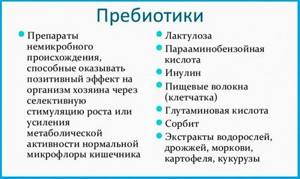
It has been shown that higher intake of prebiotic foods can increase the number of probiotic microorganisms, including Lactobacillus rhamnosus GG, L. reuteri, bifidobacteria and some strains of L. casei or L. acidophilus-group.
Prevents varicose veins
Varicose veins occur when pressure is placed on the blood vessels, causing blood to pool and the veins to swell. This condition often affects the legs because they are furthest from the heart and gravity makes it difficult for blood to flow upward.
Buckwheat noodles are rich in rutin, which is a bioflavonoid that can support the walls of veins and help them work better. Thanks to this, the dog is able to prevent the development of varicose veins and slow down the development of the disease that has already begun.
Macrobiotic food
Soya is on the list of recommended macrobiotic foods. The macrobiotic diet is a plant-based nutrition system based on the yin-yang theory originating from Asia.

According to her, the balance of yin and yang is achieved through a low-fat vegetarian diet with the right balance of macronutrients (protein, carbohydrates and fats), eating foods with a variety of energy qualities and a wide range of vitamins and minerals. This approach to eating is believed to support healthy digestion and even mental well-being.
Protein source
In most cases, it is difficult to get a significant dose of protein from noodles, but soba is unique in its high content of this macronutrient. They are literally considered the building blocks of the body, so it is important to get enough of them in your diet every day.
Buckwheat noodles are an excellent source of non-animal protein for everyone, especially vegetarians and vegans. Protein foods help increase energy production, maintain and build new muscle mass, and promote longevity.
Reducing the risk of heart disease and stroke
Studies have found that buckwheat reduces both total cholesterol and LDL (“bad”) cholesterol. Consumption of this product also helps increase HDL (“good” cholesterol) levels.
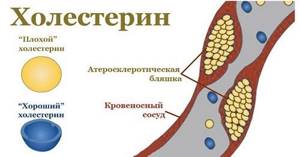
Such indicators can reduce the risk of both heart disease and stroke.
Gluten Free
People who are allergic or intolerant to gluten should not eat regular pasta. Luckily, buckwheat noodles are a great, nutrient-dense, wheat-free option for anyone who needs to avoid gluten. However, it is important to ensure that the soba you choose contains 100% buckwheat flour and has no wheat additives.
Stabilizes blood sugar levels
Although soba contains a significant amount of carbohydrates per serving, the high percentage of fiber and protein helps slow their digestion. This helps maintain normal blood sugar levels.
Chemical composition
Since the main ingredient of soba is buckwheat flour, this explains the rich chemical composition of the product, which includes the following basic elements:
- vitamins B1, B2, B5, B6 and PP - provide the body with energy, participate in redox reactions, have a positive effect on the functioning of the heart, digestive, visual and nervous systems;
- minerals (calcium, potassium, zinc, magnesium, iron, phosphorus, etc.) - support all vital processes in the body, positively influencing the stable functioning of internal organs, are contained in all cells and tissues, improving their structure;
- rutin - of all cereals, it is found only in buckwheat. The substance helps in the treatment of diseases such as hypertension, atherosclerosis, and most importantly, prevents the appearance and development of cancer cells;
- choline - helps lower blood pressure;
- arginine is an amino acid that improves the elasticity of blood vessels and helps lower blood pressure. The substance is useful for the body of people leading an active lifestyle, since it is a transporter of another element - creatine, which is the main source of energy for muscles and cells;
- lipotropic substances - protect the liver, improve its functioning, and prevent the occurrence of cirrhosis;
- folic acid - regulates the modeling of new immune cells and maintains the integrity of DNA, is necessary for the formation of red blood cells, which is, of course, very useful for pregnant women.
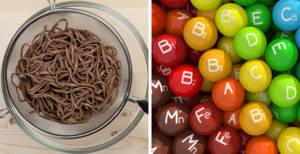
The peculiarity of real buckwheat noodles is the absence of gluten protein, which is found in all types of pasta made from wheat, rye or barley cereals. This substance has a second name - gluten, because when it interacts with water while kneading dough, it forms a sticky mass, for which it is valued in the bakery industry.
Did you know? Despite the fact that this product became known to Europeans not so long ago, it has been consumed in Japan since the mid-16th century.
Gluten is dangerous for people whose bodies are not able to absorb it, i.e., those suffering from the incurable disease celiac disease. The substance can provoke a deterioration in intestinal function, a decrease in immunity, which recognizes the protein as a foreign body and begins to fight it.
Harm and contraindications
Buckwheat noodles are very nutritious, but also contain a significant amount of carbohydrates per serving. For example, a glass of cooked product (about 60 g) contains about 35 g of this macronutrient. To balance the glycemic load of buckwheat noodles, be sure to include some high-quality protein and healthy fats in your diet.
In addition, some may be allergic to buckwheat. People who have an allergic reaction or intolerance to sinichi should avoid soba noodles.
Taste qualities
Buckwheat has a taste and aroma that is quite distinct from other crops. Buckwheat noodles also contain these components. They make the product more interesting by giving it a sweet aroma. Young noodles, which in Japan are called shin soba, have the most piquant taste. But the most common noodles can be a little bitter. This point is especially noticeable in Korean noodle varieties, in which acorn extract is added to the dough to add a nutty flavor.
Buckwheat noodles are cooked in lightly salted water and then washed. This procedure is carried out in order to rid the noodles of excess starch and flour sediment in the water. It also helps keep the noodles firm and prevents them from sticking together.
Recipe with young peas and carrots
This is a healthy recipe for a colorful dish made with soba noodles and fresh baby vegetables. In addition to green peas, you can add bell peppers, broccoli and much more.
What ingredients will you need?
For noodles with vegetables:
- 180 g soba noodles;
- 2 tbsp. frozen edamame beans;
- 3 tbsp. young peas;
- 6 medium sized carrots, peeled;
- 0.5 tbsp. chopped fresh cilantro (about 2 handfuls);
- 0.25 tbsp. sesame
For the ginger-sesame sauce:
- 0.25 tbsp. tamari or light soy sauce;
- 2 tbsp. l. quality peanut or olive oil;
- juice of 1 small lime;
- 1 tbsp. l. toasted sesame oil;
- 1 tbsp. l. honey or agave nectar;
- 1 tbsp. l. white miso paste;
- 2 tsp. grated ginger;
- 1 tsp. chili garlic sauce or sriracha.
Step-by-step cooking process
- It is necessary to cut the carrots into long thin strips using a vegetable peeler or a sharp knife.
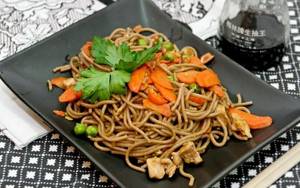
- To prepare the sauce, you need to whisk all the ingredients in a small container until an emulsion is formed.
- Next, you need to heat 2 large pots of water to a boil and at the same time fry the sesame seeds in a dry frying pan for 4-5 minutes. over low heat, stirring frequently to prevent burning.
- As soon as the water boils, boil the buckwheat noodles in one pan until al dente, according to the recommendations on the package (about 5 minutes), then drain the liquid and quickly rinse the product under cool water.
- Frozen edamame should be boiled in another pan for about 4-6 minutes, the last 30 seconds. cooking, add green peas to the beans and heat quickly, then drain all the water.
- Next, combine the soba noodles, edamame, peas and carrots in a large serving bowl, pour in the sauce and stir.
What can I add?
In this dish, young peas can be replaced with other seasonal vegetables. For example, chopped raw bell peppers make a great addition to buckwheat noodles and sauce.
How to serve
It is recommended to sprinkle the finished dish with chopped cilantro and toasted sesame seeds and serve immediately.
What kind of pasta can you eat while losing weight?
Undercooked pasta
Keep an eye on the pasta cooking time. It is better to undercook them. The product should be soft, but still the central part remains hard, which can be felt when chewing. This approach is required to ensure long-lasting digestion and a feeling of fullness. To cook dietary pasta correctly, you need to reduce the recommended cooking time by a couple of minutes.
Pasta with the right sauces
For weight loss, pasta seasoned with low-calorie sauce is appropriate. Otherwise, you can forget about being slim. A good option is vegetable-based sauces. The composition may contain zucchini, stewed tomatoes, carrots, onions, green beans, and favorite seasonings. For your diet, you can prepare sauces from stewed seafood. Also, good pasta dressings are made from fermented milk products; garlic and herbs are added to them. 1 tablespoon of grated cheese per serving is appropriate. Among others, we recommend satsebeli sauce.
Large pasta
We advise you to choose bulk pasta for your diet. It’s good when each pasta is hollow like a tube or has a complex shape. This way, you convince the brain that the plate is full and there is a large amount of food to be taken. Spaghetti or twisted nests of them weigh too much, not the best option.
There is also a useful recommendation - a trick for losing weight. To eat longer and eat less pasta, do not use a spoon, take a fork and pick up strictly one piece at a time.
Small portions of pasta
Know how to measure portions correctly. The normal volume at one time is a handful of dry product. This portion is for dietary purposes. The simplest method is to dose food with your hands. For an average fist, this is about 170 kcal and 50 grams.
There are many brands of pasta that you can eat on a diet, so the product is not in short supply. The supermarket will definitely have what you are looking for.
Durum wheat pasta is good for weight loss
Soba with chicken and peanuts
To lose weight, you need to include lean sources of protein in your daily diet. A good example is this dietary recipe for buckwheat noodles with chicken and peanuts with the addition of sweet peppers, cabbage and aromatic sauce. The advantage of this dish is that it only takes about 30 minutes to prepare.
What ingredients will you need?
For the sauce:
- 0.5 tbsp. light soy sauce;
- 0.5 tbsp. water;
- 2 tbsp. l. honey;
- 2 tbsp. l. rice vinegar;
- 2 tbsp. l. peanut butter, unsalted;
- 2 large garlic cloves, minced;
- 2 tsp. corn starch;
- Sesame oil.
For the chicken noodles:
- 180 g soba noodles;
- 500 g boneless, skinless chicken breast, cut into thin slices;
- 2 large bell peppers, cut into thin strips;
- 4 tbsp. cabbage, coarsely chopped and tightly packed;
- 0.5 tbsp. unsalted peanuts;
- 3 bunches of green onions, chopped;
- 0.25 tsp red pepper flakes or to taste.
Step-by-step cooking process
- You need to boil water in a small saucepan.
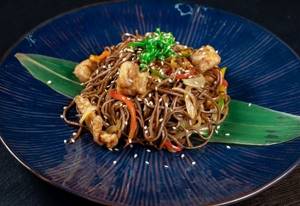
- In the meantime, you need to prepare the remaining components - chop the chicken, vegetables and measure out the peanuts.
- In a medium bowl, whisk the sauce ingredients until smooth and set aside.
- Buckwheat noodles should be placed in a pan of boiling water and cooked for 2-3 minutes, or until al dente, stirring constantly and making sure that they do not stick to the bottom and walls, then transfer to a colander (reserving 1 tbsp. decoction), rinse with cold water and drain.
- Next, heat a non-stick wok or large frying pan over high heat and add the chicken and fry until golden brown, stirring occasionally. This will take about 10 minutes.
- Next, add about 1/3 of the prepared sauce and stir continuously for 1 minute, or until the sauce thickens and coats the meat, then remove from the heat and transfer to a bowl.
- The wok (frying pan) should be washed, dried and returned to the stove, heated over high heat, add bell peppers and fry, stirring constantly, until fragrant and golden brown.
- Then you need to turn the heat down to medium and add cabbage, noodles, chicken and the remaining sauce, stir gently for about 1 minute. and remove from heat. The sauce will thicken as it heats.
- If the noodles absorb too much sauce, you can add some of the reserved broth.
- The finished dish should be sprinkled with peanuts, green onions and red pepper flakes and served hot.
Culinary certificate
The Japanese call buckwheat noodles “soba.” Sometimes it is sold under this name in “everything for sushi” departments. Nearby you can find the same thin wheat noodles, both types are similar to spaghetti.
Buckwheat noodles have almost the same composition of vitamins, macro- and microelements as buckwheat itself. At the same time, the same amount of carbohydrates, proteins and fats is maintained. It’s just that everyone’s favorite buckwheat appears in a new format, convenient for eating with chopsticks.
Soba requires less cooking time and it is important to leave it al dente. That is, there is no need to boil it until soft, it should retain its shape. This way it won’t fall apart when stirring in the pan.
In general, a wide variety of oriental dishes can be prepared from such noodles. The result will be something between Chinese street noodles and Italian restaurant pasta. In any case, it is good for the stomach, very tasty and simple.
Buckwheat noodles with chicken and vegetables
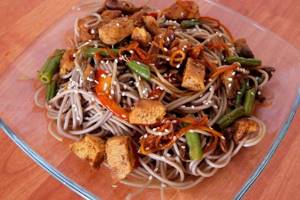
| Ingredients | Quantity |
| buckwheat noodles – | 430 |
| carrots - | 1 PC. |
| vegetable oil - | 20 g |
| chicken fillet - | 1 PC. |
| butter - | 20 g |
| sweet peppers - | 2 pcs. |
| cucumber – | 1 PC. |
| onion - | 1 PC. |
| soy sauce - | 40 ml |
| sesame – | 30 g |
| Cooking time: 40 minutes | Calorie content per 100 grams: 187 Kcal |
Process:
- Cook the noodles as written in the instructions, then add butter and stir;
- Cut the peeled onion into half rings and fry in sunflower oil;
- Cut the chicken fillet into pieces and add to the onion, stir;
- Peel the carrots and cut into strips with a knife;

- Remove sweet peppers from seeds and stalks, cut into feathers, rather thin. Along with the carrots, add them to the frying pan with the chicken;
- Fry everything together until the carrots become soft. Add noodles here;
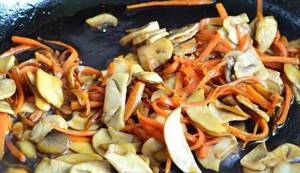
- Fry for five minutes, then pour in soy sauce and add sesame seeds, stir, cover with a lid. Let it simmer for another five minutes. Divide among plates;
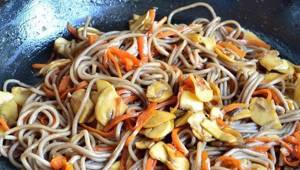
- Wash the cucumber and cut into small cubes, add directly to the plate with the other ingredients.
Beef and buckwheat noodle soup
This traditional Japanese dish is quite suitable for dietary nutrition.
What ingredients will you need?
- 1 tbsp. l. dashi concentrate;
- 1 tsp. fresh ginger, grated
- 0.25 tbsp. soy sauce;
- 2 tbsp. l. Mirina;
- 1 medium sized carrot, cut into strips;
- 100 g broccolini, cut into florets;
- 1 bunch Pak Choy, chopped;
- 1 tbsp. l. peanut butter;
- 450 g beef tenderloin, thinly sliced;
- 270 g soba noodles made from 100% buckwheat;
- 1 tsp. sesame oil;
- 1 bunch green shallots, thinly sliced.
Step-by-step cooking process
- You need to combine dashi powder, ginger, 2 tbsp. l. soy sauce, 1 tbsp. l. mirin and 2 liters of cold water in a large saucepan, heat to a boil over high heat, turn down the heat and cook without a lid for 5 minutes, remove from the stove and cover.

- Meanwhile, boil, steam or microwave the carrots, broccolini and pak choi separately until they are soft.
- Next, you need to heat the oil in a wok or large non-stick frying pan over high heat and fry the beef in batches for 3-4 minutes. or until browned, add remaining soy sauce and mirin and cook, stirring, 1 to 2 minutes. or until the meat has absorbed the liquid, then transfer to a bowl and cover with foil.
- Meanwhile, cook the noodles in a separate pan of salted water until they are soft, then drain.
- Place the cooked soba into serving bowls, add the beef and vegetables, pour in the dashi broth and serve with a drizzle of sesame oil and sprinkled with shallots.
Diet pasta casserole in the oven
PP pasta casserole is quick and easy to prepare. You will need the following ingredients:
- 250 grams of pasta. There is no need to boil them.
- 300 grams of minced chicken.
- 1 medium onion. Finely chop.
- any greens you like. Finely chop.
- 3 eggs. Whisk.
- 300 ml low-fat milk. We use 1%.
- 30 grams of any low-fat cheese.
- Salt and spices to taste.
Grease the mold with oil and lightly sprinkle with semolina. Place dry pasta in the pan. Combine the minced meat with onions and herbs, salt and pepper. Place on pasta. Combine beaten eggs with milk and cheese, salt and pepper. Pour the resulting pp sauce over the casserole and place in the oven for 40 minutes. Temperature 180 degrees.

Photo: instagram/jenyaboss
Useful tips
- Getting creative with buckwheat noodles can make losing weight simple and fun. First, you should buy soba that is 100% buckwheat. All buckwheat noodles are healthy and low in calories, so they can be a good basis for your diet.
- To make soba noodle dishes ideal for weight loss, you need to focus on using plenty of vegetables. For example, broccoli, bok choy and spinach are high in vitamins and minerals and low in carbohydrates and fat. For example, broccoli contains 80 mg of vitamin C and 92 mcg of vitamin K, which is almost the full daily value of both of these compounds.
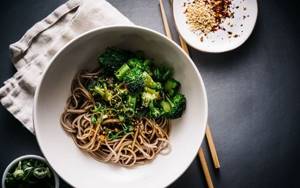
- In addition, you need to add healthy protein to dishes with buckwheat noodles. Lean meats (such as chicken) are a great option for weight loss. Tofu, which is often used in noodle dishes, also has high levels of protein, calcium, magnesium and zinc. In addition, you can add a fried egg on top of the cooked soba - it is also a good source of protein, vitamins A and B12.
- Finally, you can make buckwheat noodles spicier, or add more flavor with low-fat sauces and spices. When losing weight, you can use chopped or grated garlic, red pepper flakes, ginger, green onions, salt, sesame oil or chili oil to add more flavor to your food.
Japanese buckwheat noodles Soba 0.3kg
Japanese noodles – three main main varieties: ramen, udon and soba
- udon noodles - Japanese wheat noodles , made from wheat flour (sometimes with the addition of wheat flowers),
- soba noodles - Japanese buckwheat noodles , made from buckwheat or a combination of buckwheat and wheat, soba noodles contain many healthy proteins and vitamin B. Soba (buckwheat) began to be grown in Japan already in the time of Yayoi (3rd century BC - 3rd century BC) century AD). During the Edo period (17th - 19th centuries), people began to make and eat buckwheat Soba noodles , similar to udon noodles .
- Ramen noodles are Japanese egg noodles (historically have Chinese roots).
Soba noodles have only existed in Japan for a few centuries, but have already become a favorite dish of many Japanese, second only to rice in popularity. Soba noodles are made from buckwheat flour, due to which they can easily fall apart during cooking, so a little wheat flour is usually added to buckwheat flour. The dough is rolled out and cut into narrow strips with a special knife, then boiled. According to Japanese quality standards, for noodles to be called soba , they must contain at least 30% buckwheat. Soba noodles are a universal food product; they can be eaten in summer and winter, cold and hot, as a main dish and side dish, in soup, in salad, boiled, fried, baked, with or without sauce. Soba noodle dishes are quick and easy to prepare.
Composition of soba: Buckwheat soba noodles contain a lot of vitamins B1 and B2, rutin and choline, so it can be considered a very healthy food. Rutin, in particular, helps prevent high blood pressure and thus reduces the risk of heart disease. Choline is necessary for the production of acetylcholine, which is used in the human brain and affects memory and intelligence. Some nutrients dissolve in the water, but are not lost if you follow the Japanese custom of finishing your meal by mixing the noodle water with the dipping sauce and washing it down with the mixture. This drink tastes good and is nutritious. Soba noodles contain 10 times more essential amino acids than pasta or bread, as well as flavonoids, quercetin, thiamine, riboflavin and many other beneficial substances. By the way, soba contains twice as much thiamine, which is important for carbohydrate metabolism and the functioning of the nervous system, than in polished rice. Riboflavin, in turn, is important for energy and fat metabolism.
Soba also contains hemicellulose, which is considered effective in the fight against internal cholesterol. 100 g of soba contains 334 kcal.

